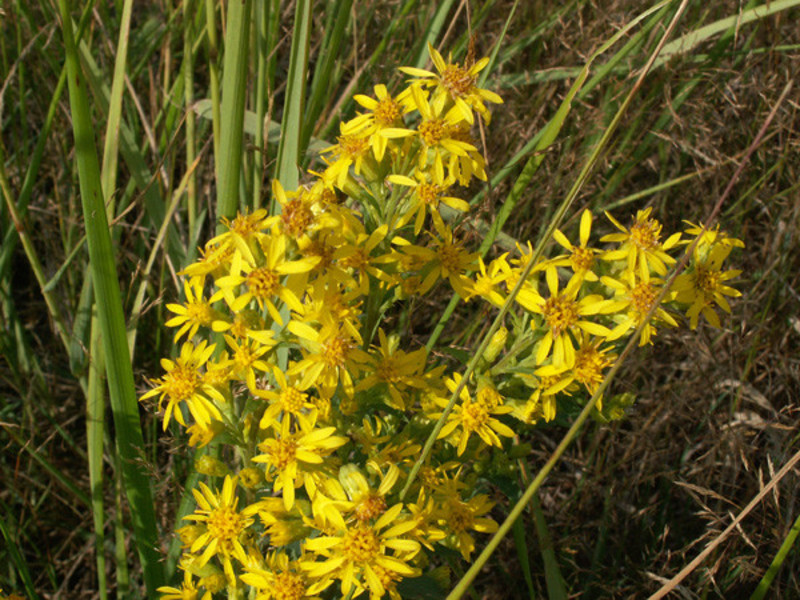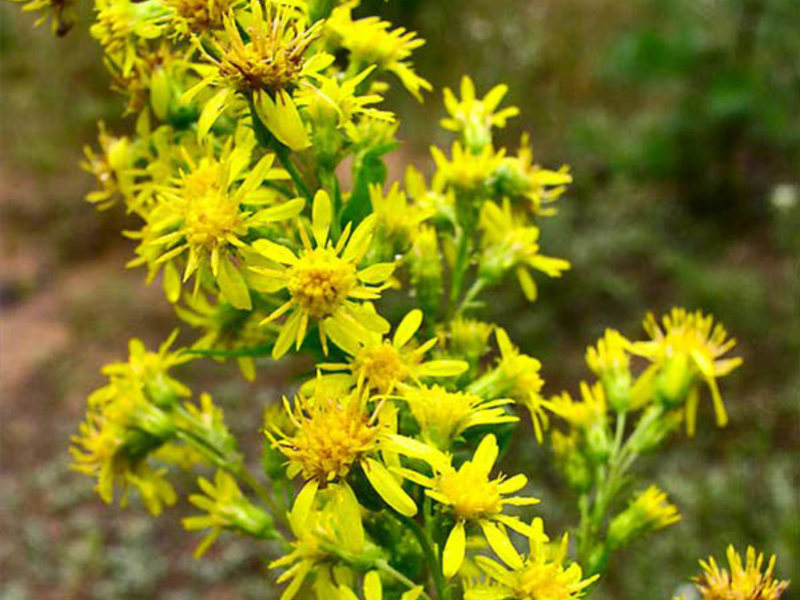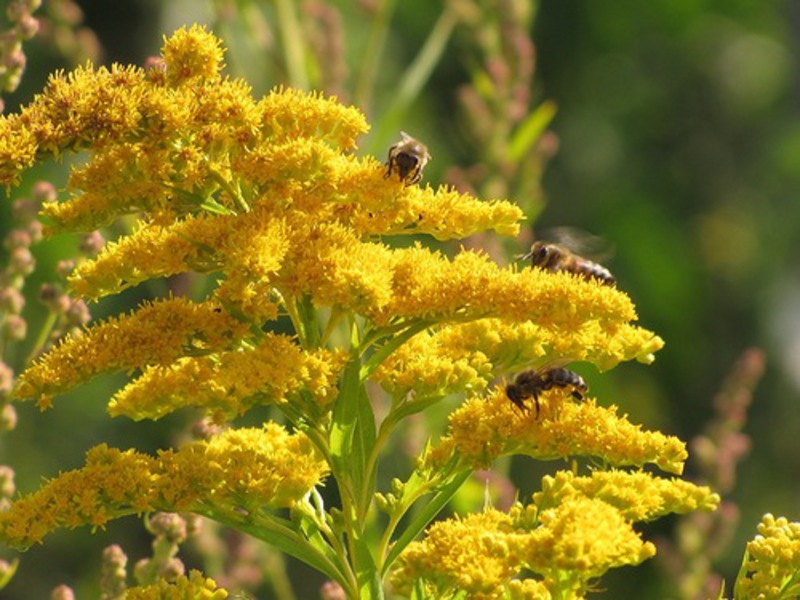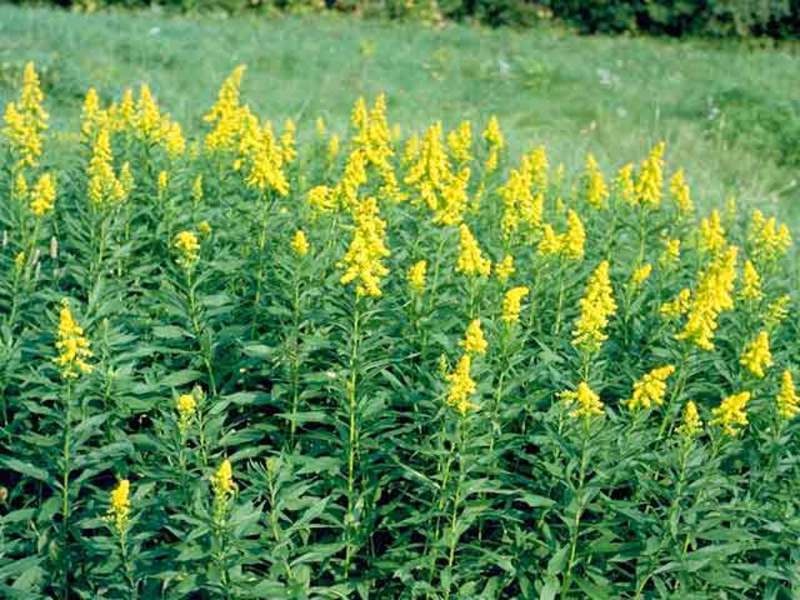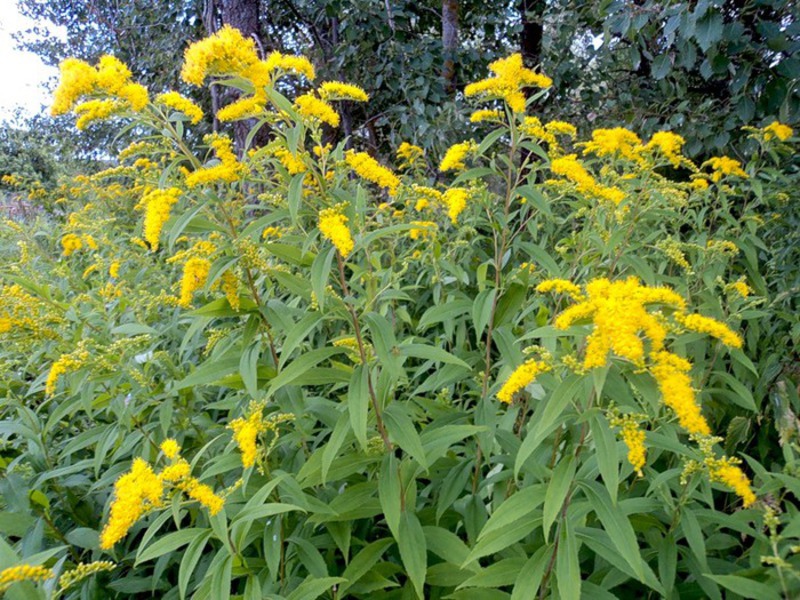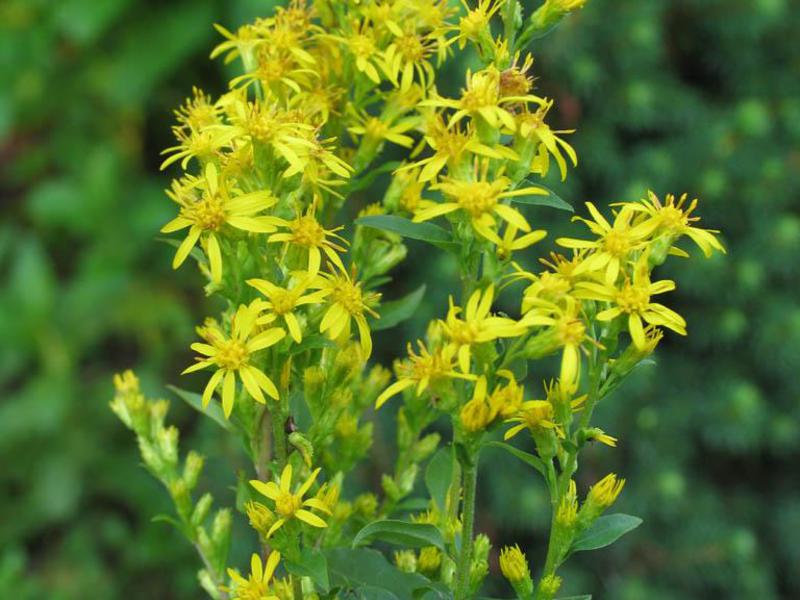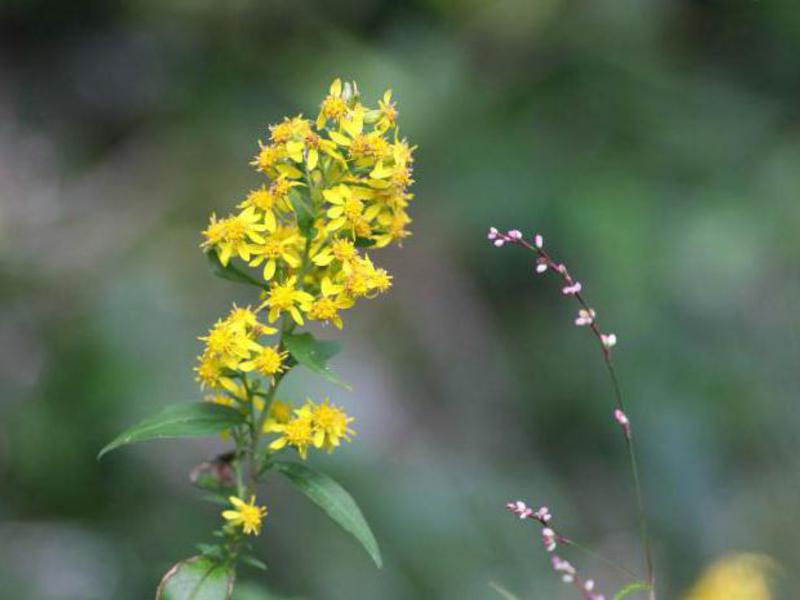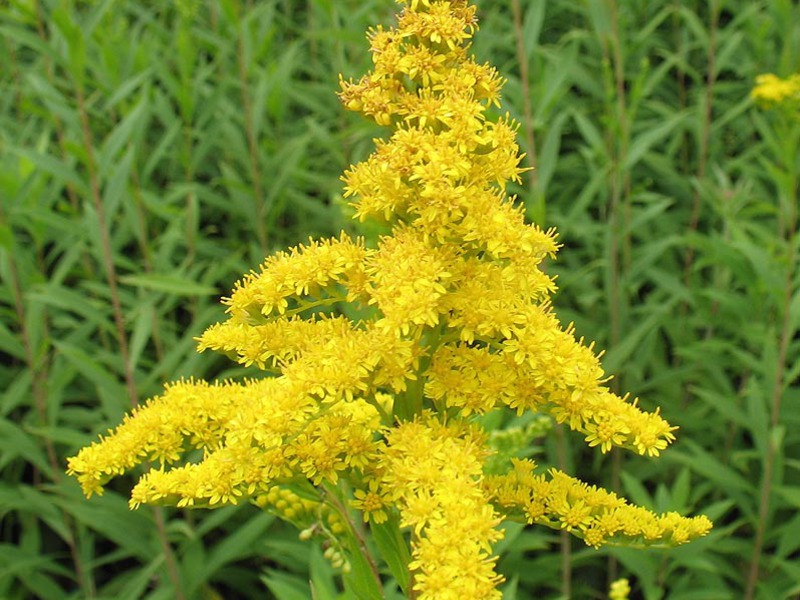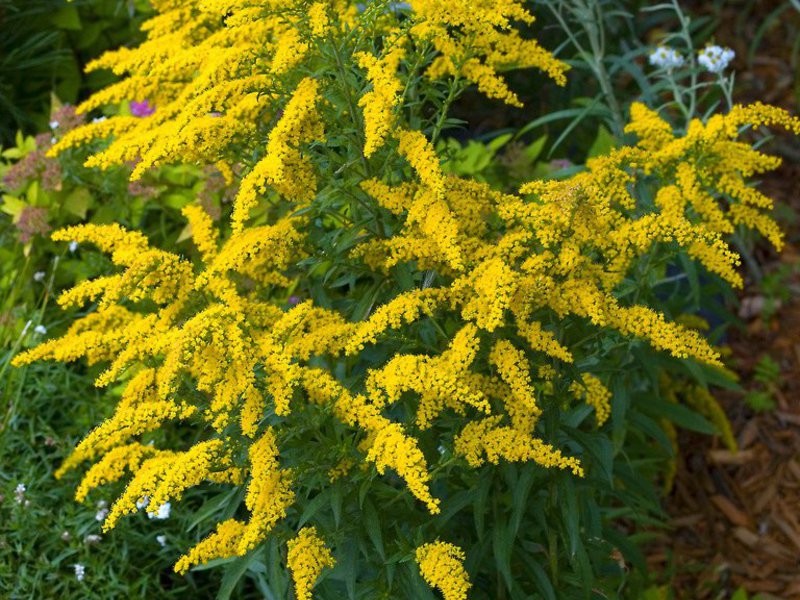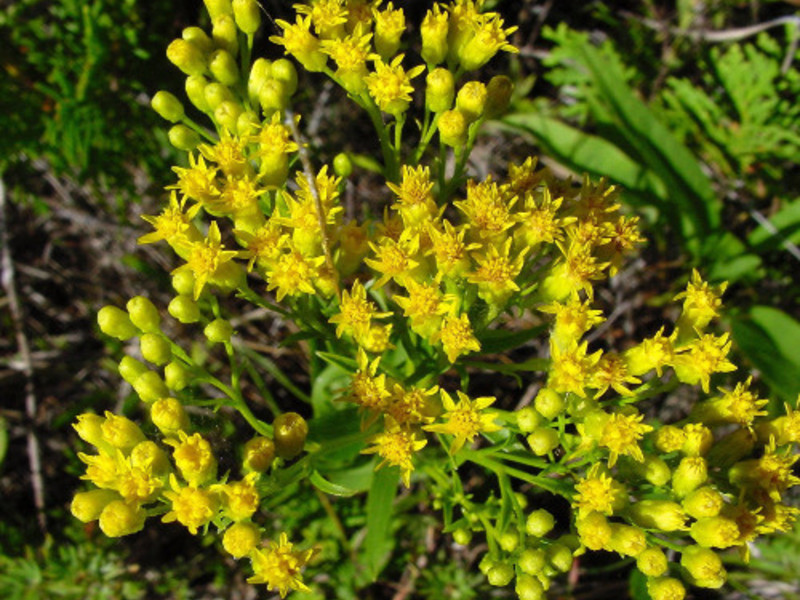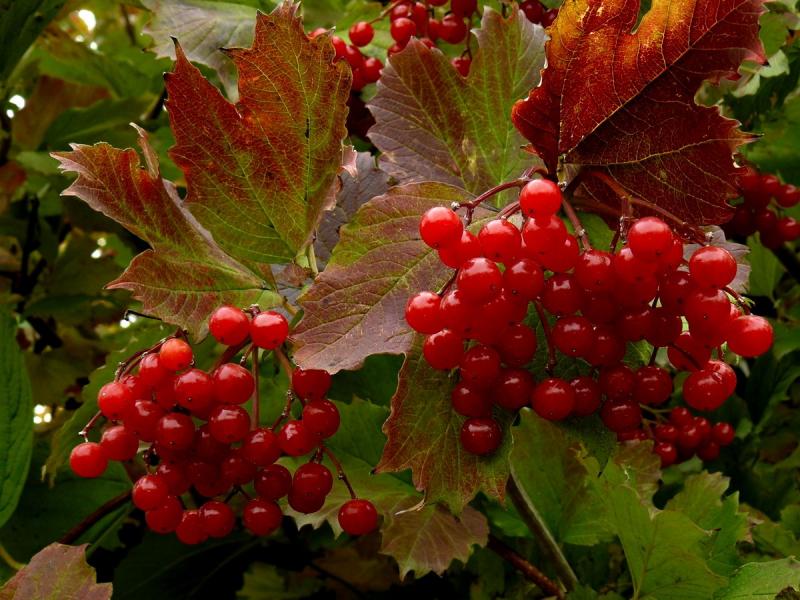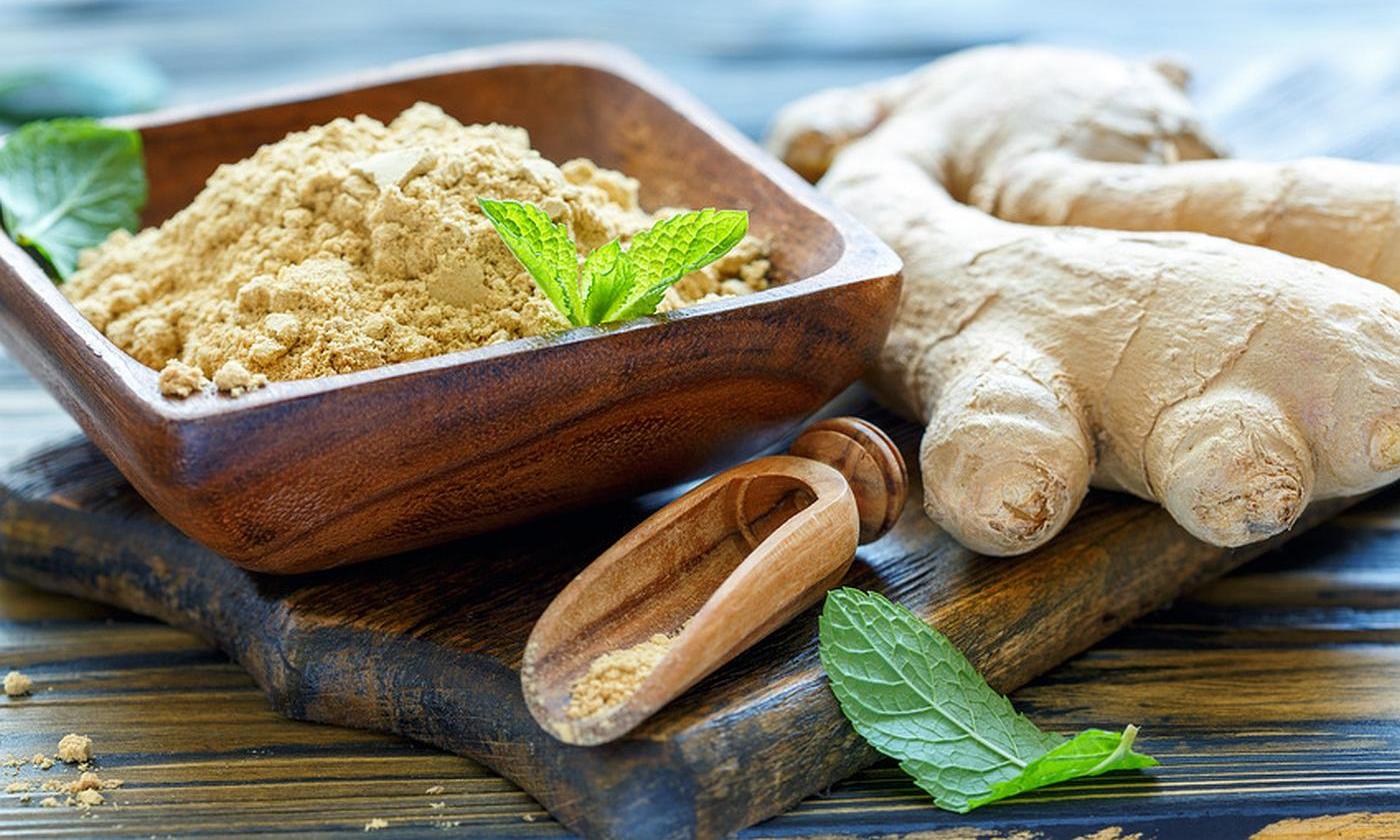 Many saw at the end of summer beautiful, tall, solitary or group, vine-like inflorescences with numerous yellow flowers that stand right up to the frost. But not everyone knows that this is one of the most medicinal and universal herbs in bloom, namely the golden rod or the common goldenrod.
Many saw at the end of summer beautiful, tall, solitary or group, vine-like inflorescences with numerous yellow flowers that stand right up to the frost. But not everyone knows that this is one of the most medicinal and universal herbs in bloom, namely the golden rod or the common goldenrod.
In the common people, it is also called hare ears, honey cake, scrofula, golden branch, jaundice-gull and there are many other names, because this grass is unpretentious and grows in fields, hills, in rural areas and just in gateways, fitting beautifully into any landscape.
Since the time of great Russia, invaluable knowledge about the healing properties of the golden rod has been passed on to us. In the photo, it looks like a thin, but strong gold rod with a fluffy yellow top. Having a bunch of this herb at that time was a very great success, since goldenrod was recognized as the "ideal herb" for the treatment of kidney and urinary system diseases, rheumatism, prostatitis, jaundice, gum disease and other diseases. Below is an ordinary goldenrod photo.
Golden rod - its medicinal properties
 This unique plant has wound healing, antispasmodic, expectorant, diaphoretic, immunostimulating, choleretic properties, and also effectively fights against influenza and herpes viruses. Even in ancient civilizations, it was used to treat jaundice, scrofula, burns of varying degrees, dermatitis and cutaneous tuberculosis. But the main area of treatment is genitourinary system, liver and gallbladder diseases.
This unique plant has wound healing, antispasmodic, expectorant, diaphoretic, immunostimulating, choleretic properties, and also effectively fights against influenza and herpes viruses. Even in ancient civilizations, it was used to treat jaundice, scrofula, burns of varying degrees, dermatitis and cutaneous tuberculosis. But the main area of treatment is genitourinary system, liver and gallbladder diseases.
Goldenrod, due to its diuretic effect, is widely used in such chronic kidney diseases as nephritis, pyelonephritis, it helps well with cystitis and urolithiasis. Indeed, along with diuretic properties, it is an excellent antiseptic, has anti-inflammatory and stone-dissolving properties.
Applying goldenrod for kidney stone disease, there is an improvement in the secretory-excretory function of the kidneys, which regulates water-salt metabolism. At the same time, the acidity of urine decreases and phosphate salts are intensively excreted. The amount of uric acid salts (uraturia) and calcium oxalate (oxalaturia) in the urine also decreases markedly. Therefore, for the prevention and treatment of oxalate and urate kidney stones, doctors prescribe medications based on goldenrod.
It can also help the elderly with involuntary urination or, conversely, with urinary retention, cholecystitis, hemorrhoids, jaundice, prostate adenoma, prostatitis, hematuria, albuminuria and other diseases.
This herb will help well with weakening of the capillary walls, metabolic disorders in the gastrointestinal tract, diarrhea, bronchial asthma and even with bone fractures.
Also, the golden rod is used in the form of lotions and washing of wounds and ulcers, dropsies for their speedy healing. Gargling with it can cure stomatitis, tonsillitis and gingivitis, prevent inflammation and bleeding of the gums, and is also an excellent remedy for eliminating bad breath.
Goldenrod application
Basically, decoctions or infusions of this plant are used to treat various diseases, but sometimes you can also use tincture. Here a few simple recipes for indoor use:
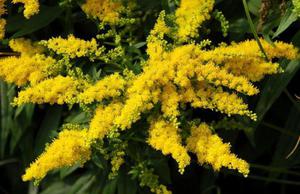 Broth. It is necessary to pour a tablespoon of herbs with one glass of boiling water, hold for 10 minutes in a water bath and then let the broth infuse for about 3 hours. It should be consumed in 30-50 ml for chronic nephritis, the presence of urate or oxalate salts in the kidneys.
Broth. It is necessary to pour a tablespoon of herbs with one glass of boiling water, hold for 10 minutes in a water bath and then let the broth infuse for about 3 hours. It should be consumed in 30-50 ml for chronic nephritis, the presence of urate or oxalate salts in the kidneys.- Infusion. For half a liter of boiling water, you need to take two tablespoons of goldenrod and infuse it for two hours. Apply 30-50 ml for kidney ailments, it is also an excellent diuretic.
- Cold infusion. You need to take two tablespoons of dried goldenrod flower brooms and pour one glass of room temperature water. Let this infusion stand for four hours. The dosage of the drug must be selected individually, but not more than 50 ml per dose. Better to take before meals. You need to use it for no more than a month, and after two weeks of a break, repeat the course. This infusion can be used to treat the gastrointestinal tract, kidneys, gout, prostatitis, adenoma, rheumatism.
- Tea. In an enamel saucepan, pour one teaspoon of this herb with a glass of cold water and bring to a boil immediately remove from heat. Let stand for two minutes and the tea is ready. You can take this tea up to three glasses a day.
You can and should also use this plant and for external use... The following options for using goldenrod are very effective:
- Infusion. Pour a tablespoon of goldenrod herb with one glass of boiling water. Insist for two hours, then strain and apply for compresses (you need to do it twice a day) or rinsing boils, wounds. You can gargle with sore throat, stomatitis and other infectious diseases. Compresses are also suitable for bone fractures.
- Bath decoction. Pour 50 g of raw materials with ten liters of water, let it boil and boil for 10 minutes. Infuse this broth for two hours. You need to take a bath in a temperature range of about 38-400C. Such a water procedure should be carried out for skin rashes, eczema, psoriasis or skin tuberculosis.
- Ointment. It is necessary to grind dry goldenrod flowers into powder and mix with cream or fatty sour cream. Great for a variety of skin conditions.
Also goldenrod is widely used and in official medicine... In pharmacies you can find drugs such as "Fitolizin", "Saburgen", "Inkonturin", "Prostaforton", Prostamed "," Tsefasabal "," Antiprostin "," Cystum Solidago "which contain this plant. There is also the essence of inflorescences, which is used for diathesis, bronchial asthma, nephritis, skin diseases.
Contraindications to the use of the golden rod
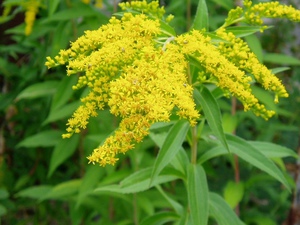 Although it is a very useful and medicinal herb, it is contraindicated in pregnancy and during breastfeeding, as well as in the acute form of glomerulonephritis. Also, you can not use this herb for patients with swelling caused by renal or heart failure.
Although it is a very useful and medicinal herb, it is contraindicated in pregnancy and during breastfeeding, as well as in the acute form of glomerulonephritis. Also, you can not use this herb for patients with swelling caused by renal or heart failure.
You need to know that common goldenrod is a poisonous plant, so you should strictly follow the instructions for its use. And in cases of using large doses of drugs, infusions or decoctions based on goldenrod, nausea, abdominal cramps, increased urination, and headaches may occur. Therefore, before starting treatment with a golden rod, you need to consult a doctor, especially if there are chronic kidney diseases, because this plant can help one person, and become dangerous for another person.
